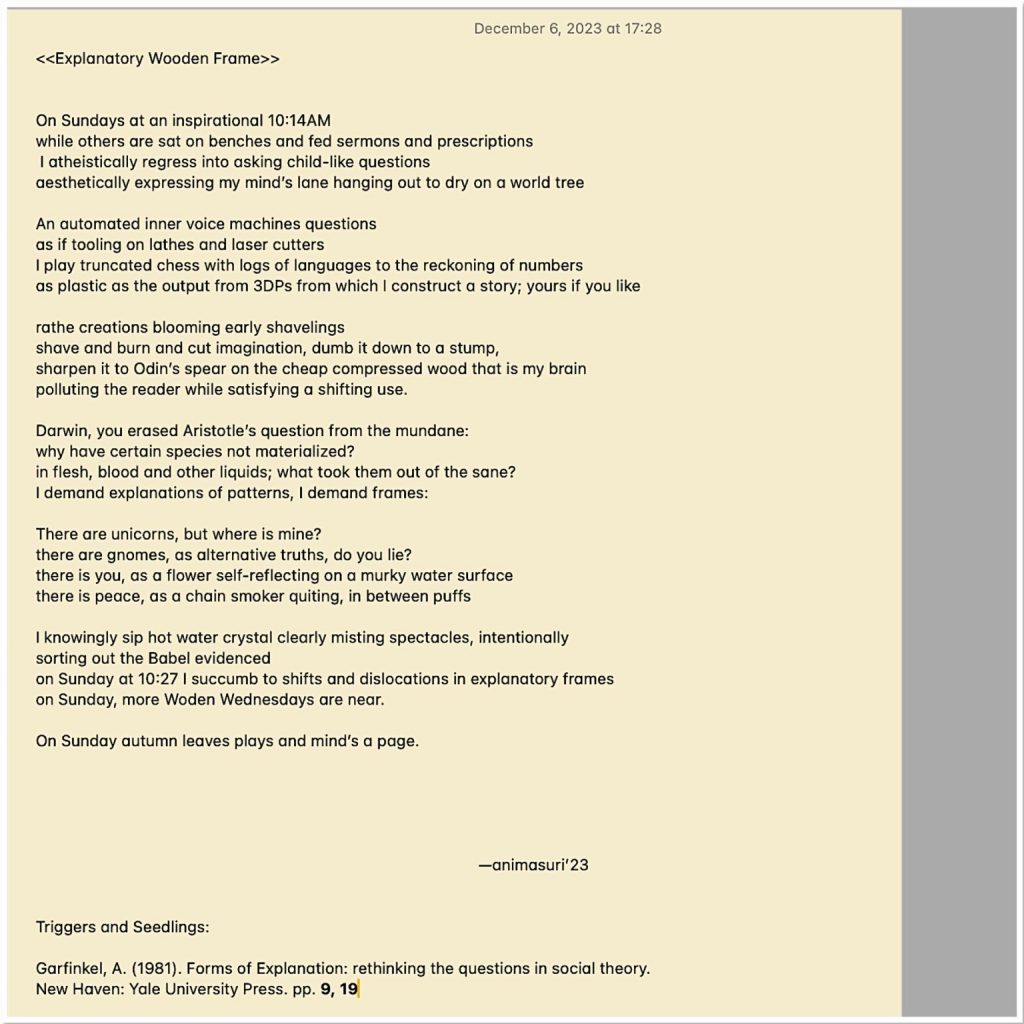The knight in white armor on a black steed
as imagine-maker is dead, transformers to heed
the clippetheeclob of innovation by calculation
heralding mists of information as mesmeric mélange
eagerly screaming screen for subscribing village children
brandy-gulping simulated stories, ‘n’ maiden’s pillage
by brethren bravery, bringing swords and steel
from battlefield dust voiding clarity for real
blingatheeblingbling as language as if thought
their speak brought structure, order and gain
carves numbers of the data slain on surfaces plain
meticulously repackaged decimals as commerced chain
flaunting measures why care about accuracy
where approximation is the new creep and
repurposed “knowledge”’s endearingly cheap
feeding sugarwater as the new proclaim
hyped up on data diabetes, mellitus for quick reign
the hoodie bearing knight now wields wires
tickling the village funds and scanning retina
chasing attention hunts down debabyproofed streets
plugging into every, yearning, eagerly-leaking brain
wining prizes and earning fame
the knight in shiny system
stands tall, bares no shame
Hippeetheehop, clippetheeclob
Blingatheeblingbling: the knight with a fresh polish!
Hooray! Hooray! Hooray!
as pure strategy
as any thought unworded
neigh, as expressed joy:
remaining to say.
—animasuri’24
—-•
100%humanly bred & penned with wink
For allowing an uneducated poem to become a human-relational UI, and for “The knight with a fresh polish!,” thank you Dr. Williiams, Tim. (2024, Dec. 18) via https://lnkd.in/g2MZgjJJ at Tim Williams, PhD
—-•
#criticalliteracy #criticalpedagogy
#nonelinear_sensemaking #liminality
















